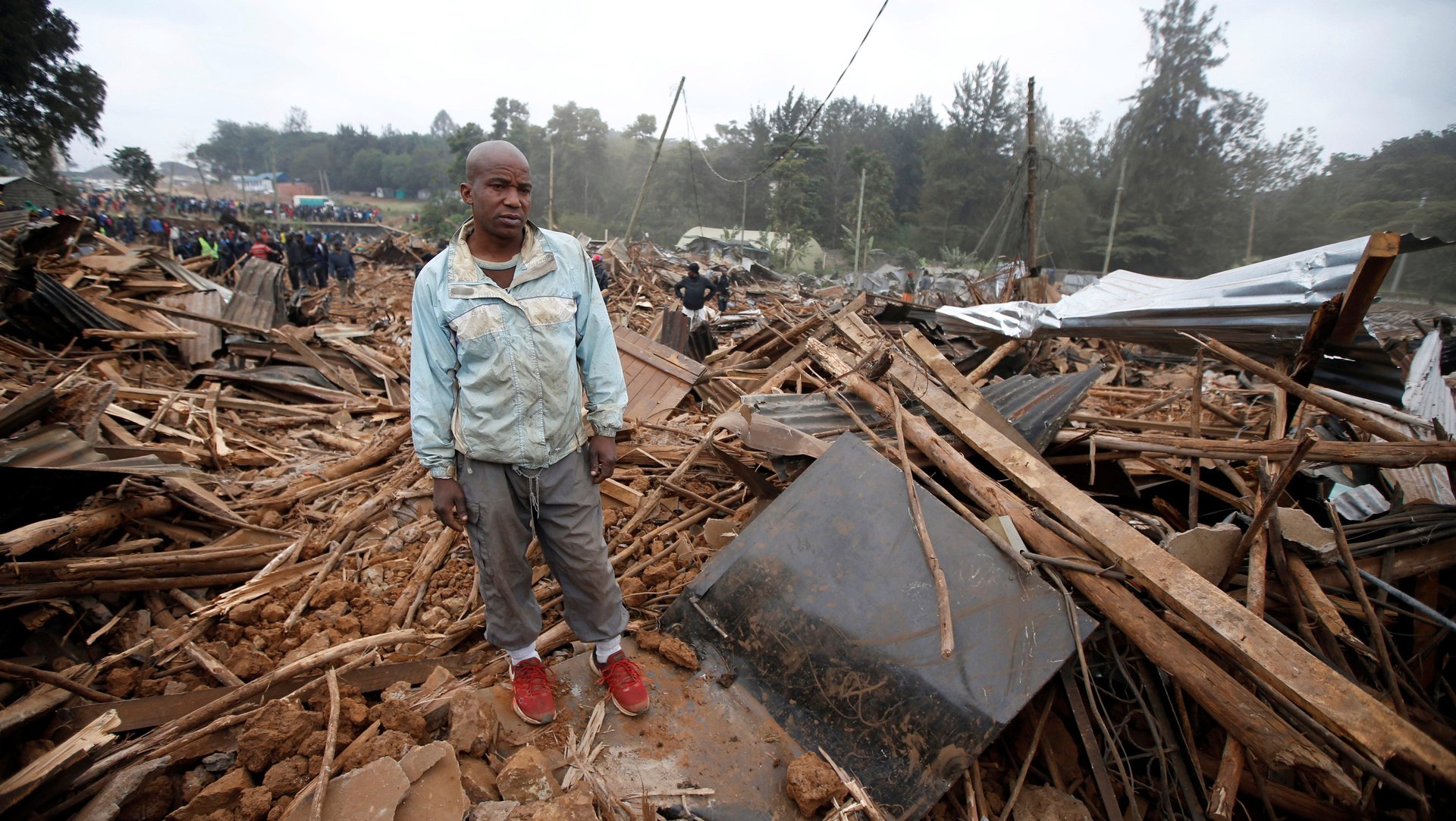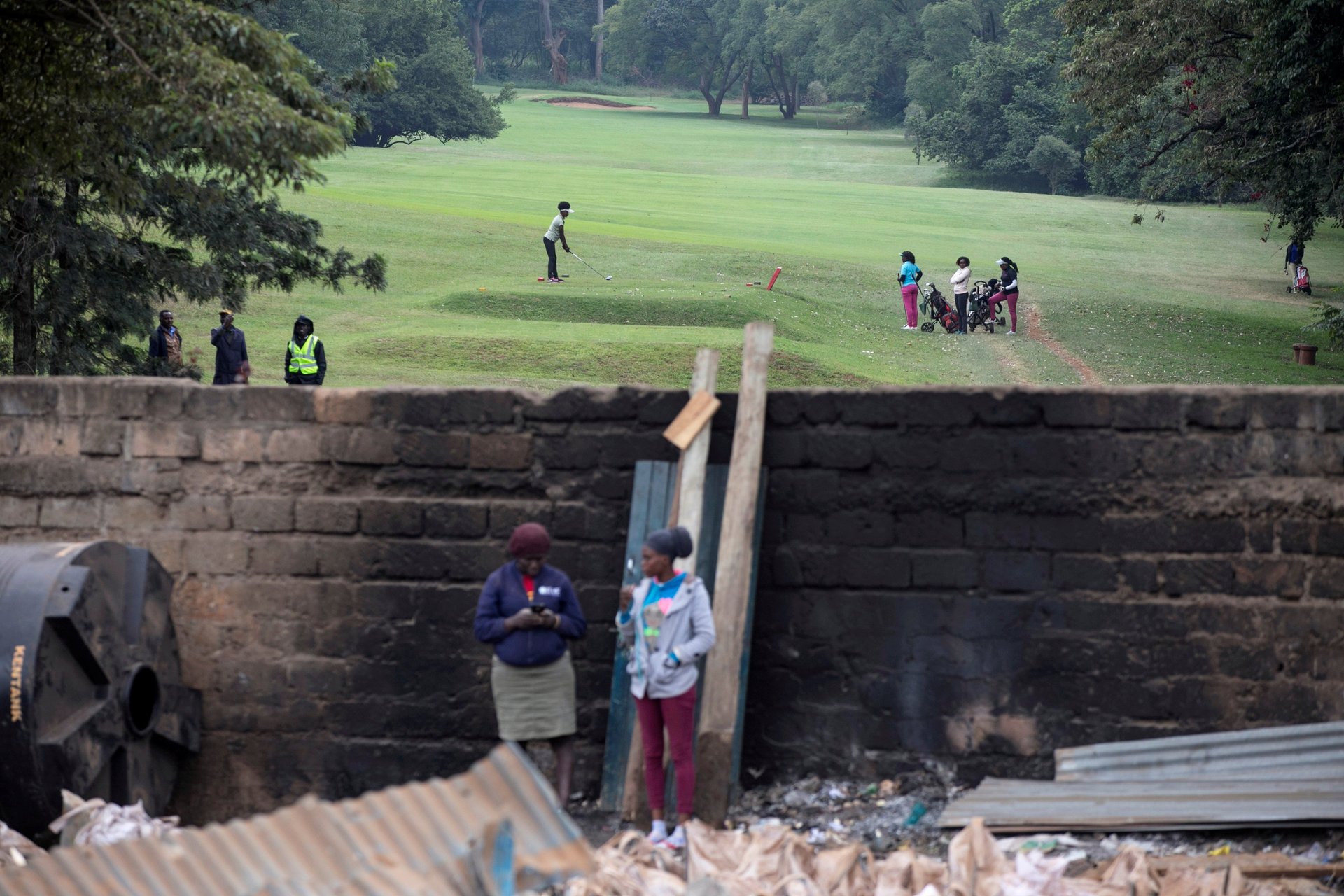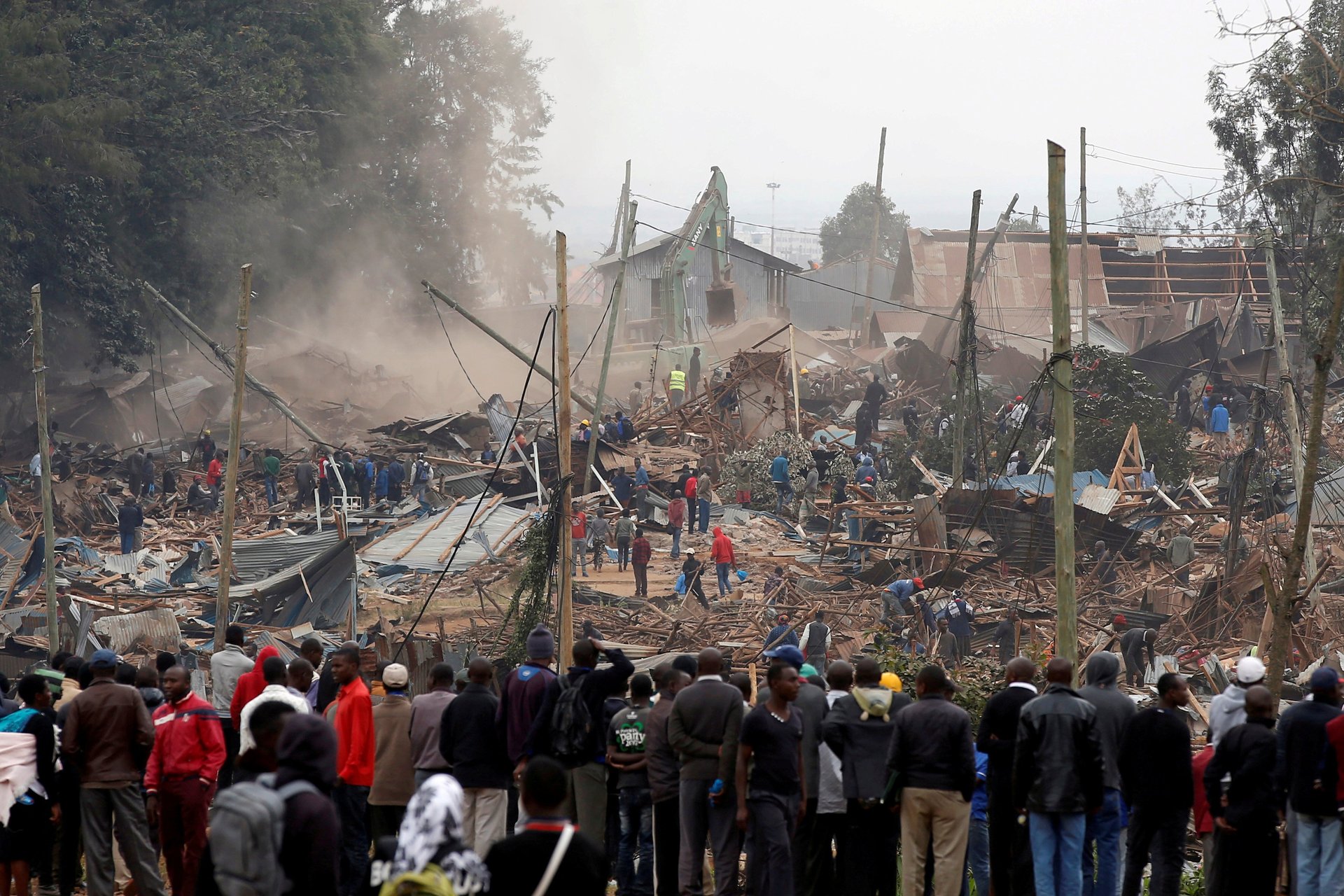This photo shows how urban development in Kenya often neglects the poor
Residents of Kenya’s biggest slum Kibera started their week on a bleak note: government cranes and bulldozers demolishing homes, schools, and businesses in certain sections of the slum to make way for a new $20m dual-carriageway in the capital Nairobi. Over 30,000 dwellers were rendered homeless in the process on Monday (July 23), a move Amnesty International Kenya said, “betrays the public trust and violates our laws.”


Residents of Kenya’s biggest slum Kibera started their week on a bleak note: government cranes and bulldozers demolishing homes, schools, and businesses in certain sections of the slum to make way for a new $20m dual-carriageway in the capital Nairobi. Over 30,000 dwellers were rendered homeless in the process on Monday (July 23), a move Amnesty International Kenya said, “betrays the public trust and violates our laws.”
As Kenyans watched the shanties being removed, one image by Reuters’ photographer Baz Ratner captured the farcical nature of the evictions and the dire ways in which road construction and urban development habitually neglect poor city populations. In the photo, a golfer tees in the background while people stand opposite watching the destruction site—both groups separated by only a short bricked and burnt wall.

The photo is not only an exemplar of the stark inequalities that define Kenya’s capital but is also indicative of how unequal land access, poor urban design, lack of political will and public accountability, besides prioritizing road construction and expansion instead of investments in mass public transport converge in an increasingly urbanizing and fast-paced city.
Over the last decade, economic growth in Kenya has created a rising middle class in tandem with increasing rates of urbanization. With its property boom and shiny new skyscrapers and malls, Nairobi has especially been at the heart of this transformation, attracting both global tech companies and wealthy investors looking for second homes. And given the lack of public transport infrastructure, this has meant wealthier residents move around in private cars, leaving the city congested and one of the most dangerous places to be a pedestrian.
To ease this, the government has taken to expanding roads and building new highways—often with the help of Chinese firms. But as much as these new roads are welcome, new research shows that prioritization of road construction without consideration for the consequences of urban mobility and safety has had a dire impact on the city’s majority population: slum dwellers. A report from the Overseas Development Institute and funded by the FIA Foundation shows that within Nairobi, over half of all road traffic fatalities occur on new high-speed roads, primarily affecting poorer people who have to walk everywhere.
The sprawling nature of Nairobi also means residents are unable to easily move from one part of the city to the other due to unreliable and inefficient transport networks made up of matatus and boda boda motorcycles. And with poorly digitized land registries, disputes over land ownership are common, with corrupt land deals sometimes subverting formal development plans.
Besides, constructing new roads have a political salience, especially for politicians who use their visibility as “tangible signs” of their performance. Public contracts for road construction also offer opportunities for private gain through kickbacks or rewards to political patrons. Donors and governments also support paving new roads, pegging their justification on economic grounds: Kenya’s roads authority estimates that for every shilling invested in roads, the country stands to gain two shillings and fifty cents in benefits.

Yet building more roads, and not investing in light railway or a rapid bus transit system, haven’t reduced congestion—hence why Nairobi, ironically, is thinking of proposing car-free days. And while thousands of Kenyan pedestrians, motorcyclists, and cyclists die every year in road crashes, road safety continues to remain a distant issue in the public sphere.
On Monday, facing criticism, the government defended the demolitions, saying only 2,000 households were affected and that a resettlement plan for those evicted had already been completed.